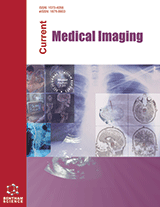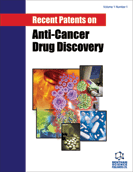
Abstract
Over the last decade the interest towards functional neuroimaging has gradually increased, especially in the field of neurodegenerative diseases. At present, diagnosis of dementia is mostly clinical. Numerous modalities of neuroimaging are today available, each of them allowing a different aspect of neurodegeneration to be investigated.
Although during the last periodmany have predicted a forthcoming disappearance of SPECT imaging in favour of the PET imaging, many new radiotracers SPECT, dual-SPECT tracers techniques and receptor targeting designed radiopharmaceuticals are currently at study.
Besides, last decade has also assisted to the development of new SPECT imaging systems, most of them integrated with other imaging modalities (MRI, CT, ultrasound techniques), granting improved imaging capabilities.
All these improved conditions, especially appealing for the neuroimaging, together with the new radiopharmaceuticals in development may renovate the interest for SPECT clinical applications.
Keywords: SPECT, neuroimaging, radiopharmaceuticals, dementia, functional imaging, 99mTc.
Current Radiopharmaceuticals
Title:SPECT Radiopharmaceuticals for Dementia
Volume: 6 Issue: 4
Author(s): Claudio Guidotti, Daniela Farioli, Maria Chiara Gaeta, Elisabetta Giovannini, Patrizia Lazzeri, Martina Meniconi and Andrea Ciarmiello
Affiliation:
Keywords: SPECT, neuroimaging, radiopharmaceuticals, dementia, functional imaging, 99mTc.
Abstract: Over the last decade the interest towards functional neuroimaging has gradually increased, especially in the field of neurodegenerative diseases. At present, diagnosis of dementia is mostly clinical. Numerous modalities of neuroimaging are today available, each of them allowing a different aspect of neurodegeneration to be investigated.
Although during the last periodmany have predicted a forthcoming disappearance of SPECT imaging in favour of the PET imaging, many new radiotracers SPECT, dual-SPECT tracers techniques and receptor targeting designed radiopharmaceuticals are currently at study.
Besides, last decade has also assisted to the development of new SPECT imaging systems, most of them integrated with other imaging modalities (MRI, CT, ultrasound techniques), granting improved imaging capabilities.
All these improved conditions, especially appealing for the neuroimaging, together with the new radiopharmaceuticals in development may renovate the interest for SPECT clinical applications.
Export Options
About this article
Cite this article as:
Guidotti Claudio, Farioli Daniela, Gaeta Chiara Maria, Giovannini Elisabetta, Lazzeri Patrizia, Meniconi Martina and Ciarmiello Andrea, SPECT Radiopharmaceuticals for Dementia, Current Radiopharmaceuticals 2013; 6 (4) . https://dx.doi.org/10.2174/1874471006666131217112006
| DOI https://dx.doi.org/10.2174/1874471006666131217112006 |
Print ISSN 1874-4710 |
| Publisher Name Bentham Science Publisher |
Online ISSN 1874-4729 |
 45
45
- Author Guidelines
- Graphical Abstracts
- Fabricating and Stating False Information
- Research Misconduct
- Post Publication Discussions and Corrections
- Publishing Ethics and Rectitude
- Increase Visibility of Your Article
- Archiving Policies
- Peer Review Workflow
- Order Your Article Before Print
- Promote Your Article
- Manuscript Transfer Facility
- Editorial Policies
- Allegations from Whistleblowers
Related Articles
-
Homocysteine in Neurological Disease: A Marker or a Cause?
CNS & Neurological Disorders - Drug Targets Management of Hypertension-Journey from Single Drug Therapy to Multitargeted Ligand Therapy: A Clinical Overview
Current Clinical Pharmacology Blurred Edges: Evolving Concepts of Autism Spectrum Disorders and Schizophrenia
Adolescent Psychiatry Physical Exercise for the Treatment of Neuropsychiatric Disturbances in Alzheimer’s Dementia: Possible Mechanisms, Current Evidence and Future Directions
Current Alzheimer Research The Chemistry and Pharmacology of Tetrahydropyridines
Current Medicinal Chemistry National Institute of Mental Health Clinical Antipsychotic Trials of Intervention Effectiveness- Alzheimers Disease (CATIE-AD): Baseline Characteristics
Current Alzheimer Research Overview and Findings from the Rush Memory and Aging Project
Current Alzheimer Research Old Friends in New Constellations - the Hematopoetic Growth Factors G-CSF, GMCSF, and EPO for the Treatment of Neurological Diseases
Current Medicinal Chemistry Beyond Monoamines-Novel Targets for Treatment-Resistant Depression: A Comprehensive Review
Current Neuropharmacology Multifunctional Lipoic Acid Conjugates
Current Medicinal Chemistry Barriers to Optimising Prescribing and Deprescribing in Older Adults with Dementia: A Narrative Review
Current Clinical Pharmacology Carotenoids of Microalgae Used in Food Industry and Medicine
Mini-Reviews in Medicinal Chemistry P2Y Receptors in the Mammalian Nervous System: Pharmacology, Ligands and Therapeutic Potential
CNS & Neurological Disorders - Drug Targets Structure – Function Relationships of Pre-Fibrillar Protein Assemblies in Alzheimers Disease and Related Disorders
Current Alzheimer Research Dementia After Age 75: Survival in Different Severity Stages and Years of Life Lost
Current Alzheimer Research Kinases as Targets for Parkinson's Disease: From Genetics to Therapy
CNS & Neurological Disorders - Drug Targets Endothelial Dysfunction and Atherosclerosis: Focus on Novel Therapeutic Approaches
Recent Patents on Cardiovascular Drug Discovery Neurodegeneration with Dementia: From Fundamentals of Pathology to Clinical Imaging by MRI and SPECT.
Current Medical Imaging Increased Alzheimer’s Disease Neuropathology is Associated with Type 2 Diabetes and ApoE ε4 Carrier Status
Current Alzheimer Research Adrenomedullin Function in Vascular Endothelial Cells: Insights from Genetic Mouse Models
Current Hypertension Reviews






















